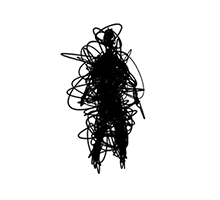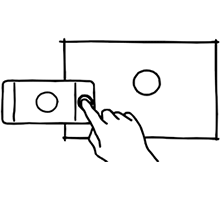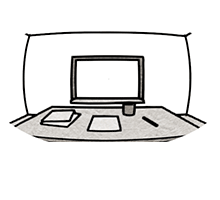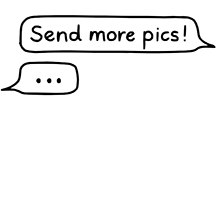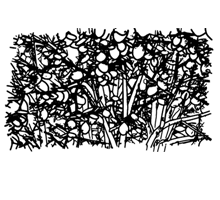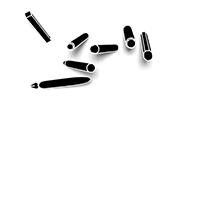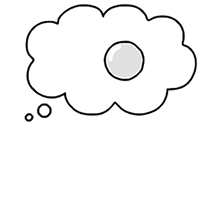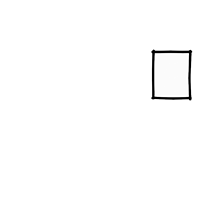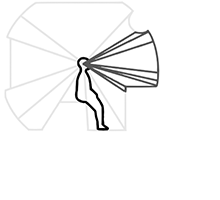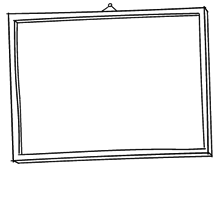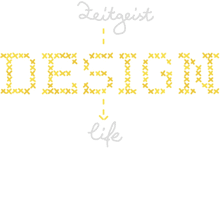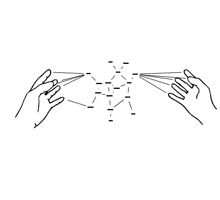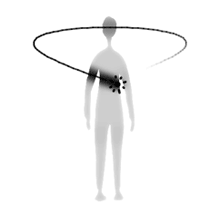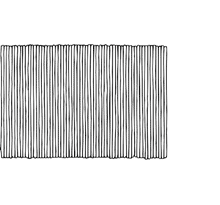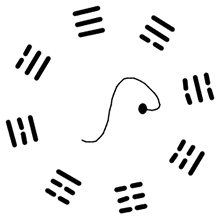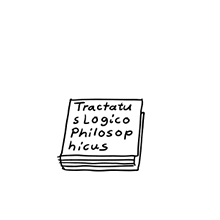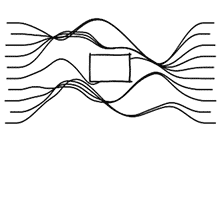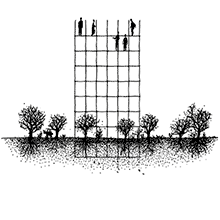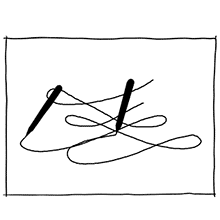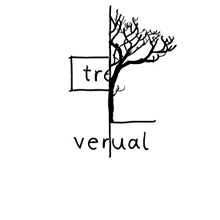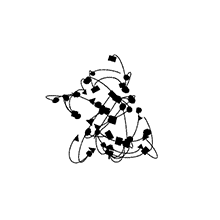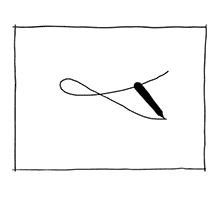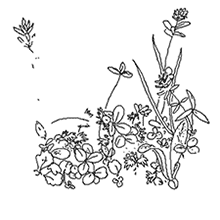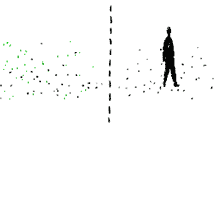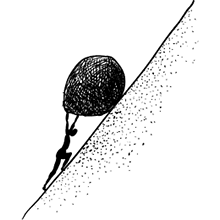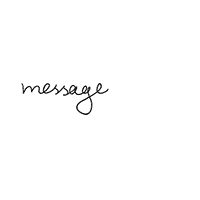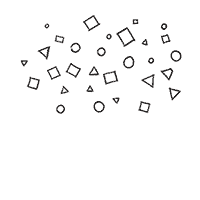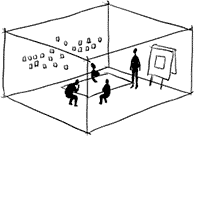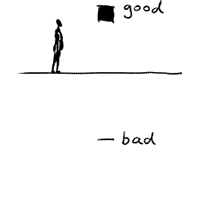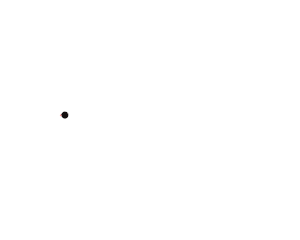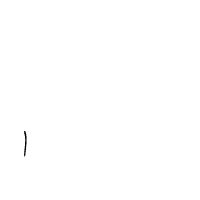About 2300 years ago, the great Chinese thinker Xunzi 荀⼦ wrote: "Human nature is bad".
…Blog Posts
Should we just live in the moment? In "Matter and Memory" the French philosopher Henri Bergson claims that this is not even possible.
…To "animate" means to breathe life into things. In these 5 exercises we make stones come alive.
…You are awake. You think and you feel. But what is it that is doing all this thinking and feeling?
…2400 years ago Aristotle found out how to be happy.
His Nicomachean Ethics is an operating manual for a good life:
…How do I even begin my drawing? The secret to jumpstart our creativity is fun.
But how does that work?
…If you are interested in truth, be it in the form of scientific knowledge or artistic beauty, there is no way around Immanuel Kant's 'Critique of Pure Reason'. In this book Kant asked the simple question: "What can we know?"
…Last summer, I found myself at a farmers market of a small town in Southern France. The air was alive with chatter and the joy of yet another sunny day ahead. I made my way through tourists, neighbourhood regulars and other early birds. To escape the buzz, I stepped into the nearby cathedral.
…The emotional rollercoaster I experience in art supply stores can be summarised in one word: greed.
…How do we know which food is best for us? We might start a low-carb diet. Then we switch to whole grains, or even go fully vegan—only to return to a low-carb diet yet again. We constantly change our minds.
…Are we cut off from the outer world, trapped alone in our personal experience?
…If we want to understand what a picture is, then we must look at the difference between perception and imagination.
…Designers share a problem with politicians and business consultants: nobody knows what they are actually doing. I can shed some light on what designers do.
…Whenever I tell someone that I have studied Philosophy, the first question is always the same: „Why would you do that?“
…Some people claim that there is no truth. According to these sceptics everybody is stuck in their own personal perspective. Nobody can ever know anything for sure.
…Confucius 孔夫子, one of the great Chinese thinkers, was known to always carefully straighten his mat before he sat down.
Why?
…Navigate life with this ancient Chinese book.
The Yijing 易經 or “Book of Change” is one of China’s oldest books and a corner stone of Chinese philosophy. It tells us how to understand change, how to find out what kind of change we are in right now, and how to deal with it.
…How can we tell what is real and what isn’t? Ludwig Wittgenstein said that it was all about language. If we want to understand what we can know, then we must look at how language works.
So he wrote two very different books on how we use language to think.
…Why do some images support a text better than others? Let’s start with a quick example:
…Let’s not sugarcoat this: diseases, hunger, and our inevitable death have been a strain on our relationship with nature. We needed some distance.
…on the difference between seeing and knowing
The following exercises are a bit more advanced than the ones in the “Quick beginner’s guide to drawing”, and I hope you find them equally fun!
…An ancient feud rages at the very core of your creative endeavour: The rational logical you and its fuzzy intuitive rival are in constant dispute.
…Until recently everyday objects were shaped by their technology. The design of a telephone was basically a hull around a machine. The task of the designers was to make technology look pretty.
6 drawing exercises to get you started right now!
The basic craft of drawing is about two things: you learn to control your hand and to see.
…Some drawings look fresh and alive while others … don’t. What is their secret? Let’s look at cameras first.
Many creatives know this phenomenon: They start a new project on a promising topic with excitement, but when they can’t come up with an original idea instantly — they lose interest. They come to the conclusion that they picked the wrong topic. So they restart with a new topic, only to find out that the grass isn’t any greener on that side of the fence either.
Where do these commitment issues come from?
It is fashionable to be outraged about lies in mass media. News agencies, corporations, and — God forbid! — even politicians all seem to mislead us. And they get away with it! How is that possible? Niklas Luhmann has some answers in his classic book from 1995 titled “The Reality of Mass Media”.
In 1942 Albert Camus wrote a book called “The Myth of Sisyphus”. It is about the one truly important philosophical problem: Given the circumstances of our existence, shouldn’t we just kill ourselves? This is his answer:
There is this forbidden question which many people would love to ask when confronted with a piece of art. And it goes something like this:
“What does the artist want to say with this piece of art?”
This article is a quick summary of a basic design course. It addresses a simple question: How do you design interactive systems that are easy to understand? Well, it all comes down to two things: structure and process.
The digital revolution was a gold rush for curious minds. Nobody knew what digital media actually was, only that it was about to impact our lives profoundly. It was unknown territory waiting to be filled with new artforms, designs and ways to understand the world.
Ask: "Does it need to be done?"
Almost any creative person I know has to deal with heavy doubts in their process. And to a certain extent this might be an unavoidable part of our artistic lives. But I might at least pull one painful thorn out of your side: The question of whether your project (yes, the one from which you are procrastinating right now!) is good enough or not.
We are obsessive problem solvers. When we see something imperfect, our perception wants to figure out what is going on — we get curious. On the other hand, when something is too irregular or “crappy” we ignore it as irrelevant noise.
Pick a small topic for your creative project!
One of the biggest mistakes you can make in your creative project is to pick a topic which is too big.
As an artist and designer I keep making one mistake time and again. So if this article sounds like me giving advice to other creatives… it is actually an attempt to keep myself from making this mistake yet again.

